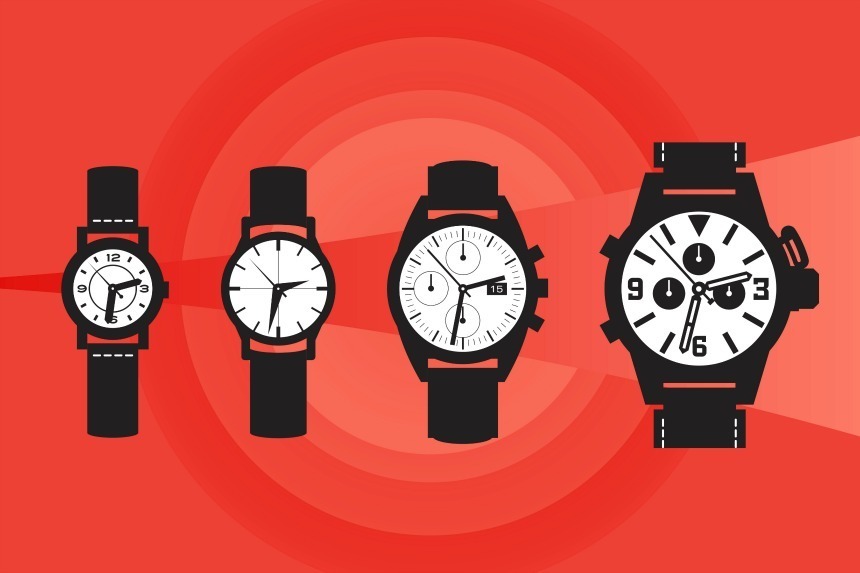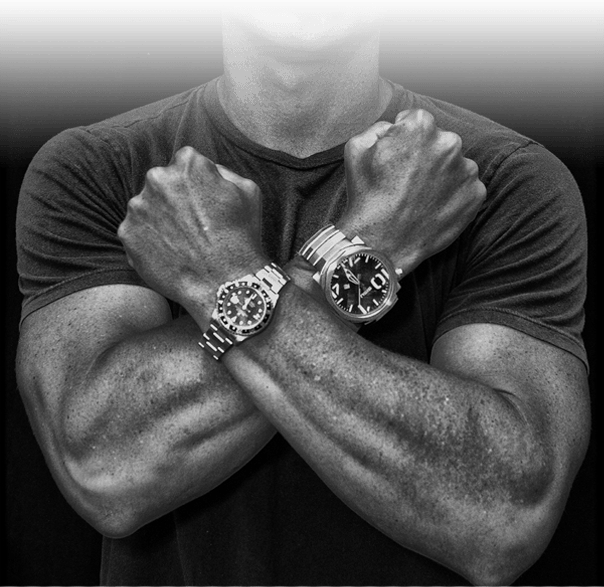
This shot compares a 55 millimeters wide SISU Bravado watch with what appears to be a 40mm wide Rolex GMT Master II. Credit: sisumovement.com
It may have been the man that made the watch 20 years ago, but today the predominant sensibility in timepiece fashion is that the watch makes the man. As timepieces grew in size and contained ever greater levels of visual personality, they took on a communicative element akin to the clothes people wear. Further, it is often believed by many men that a watch is the only jewelry a man is “allowed to wear.” Whether or not you agree with this statement, you’ll freely admit that most all men are willing to wear a nice watch. This further imbued the wrist watch with a communicative power beyond its mere function to indicate the time.
Using a watch to indicate a lifestyle, social status, or level of success is why many people tend to say that people today do not wear a watch in order to primarily indicate the time. While that may be true, it is not true that people do not still use their watch to tell the time. All of the world’s best selling watches, at all price levels, do one thing very well – offer the time in a very legible manner. They just also happen to do a lot more things at the same time.
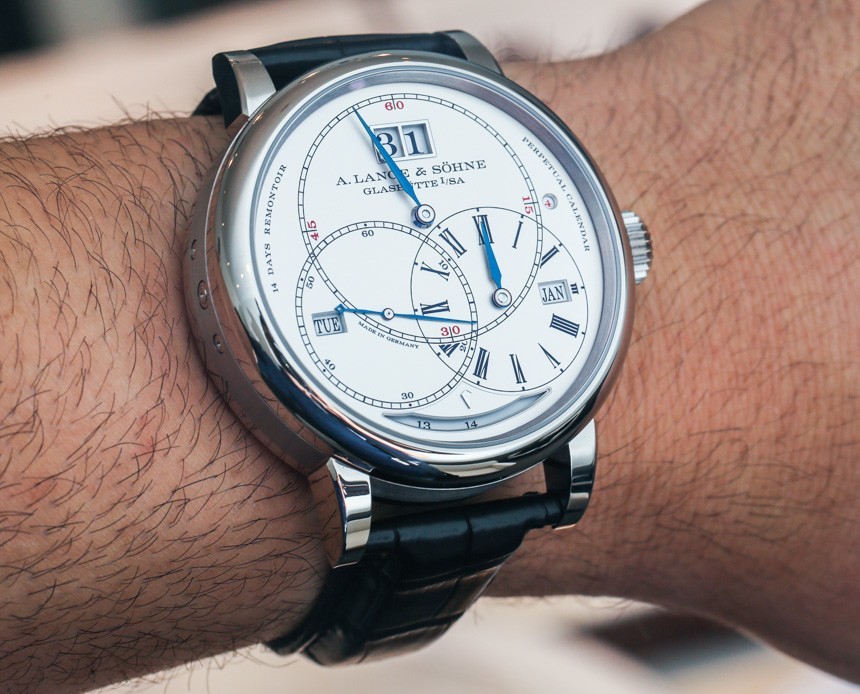
The A.Lange & Söhne Terraluna is a perfect example for a watch that offers a rather legible readout of the time – while also doing “a lot more things at the same time”.
A Matter Of Masculinity
It is socially interesting how women borrow things from men, but the opposite is rarely true. Over the years women have adopted men’s names, clothing preferences, vehicle choices, and of course watch sizes. The “boyfriend watch” is similar to the boyfriend shirt, where a woman, in order to indicate her “relational dominance and security,” or her command of both female and male roles, will choose to wear a man’s versus women’s watch. A good example of this is the fact that in many places, such as Asia and Europe, traditionally masculine watches such as the Rolex Submariner or Daytona have been widely adopted as a choice of watch for women.
As women “borrow” traditionally masculine items they begin to lose masculine appeal (either totally or in a small way). This drives men to search for new “masculine” items that are exclusive of women’s current tastes. This has been a common social rule for the last several decades and of course continues today. In regard to watches, this is important in two regards. First, it is directly related to watch size because as women began to wear larger watches, what was once an exclusively men’s watch size was now being preferred by females. Thus, whereas a man used to wear 36-40mm wide watches, because this size is now common for women’s watches, men have moved up to larger sizes in order to once again discover a size with a more exclusively masculine connotation. Of course there are cultural and social differences, but this is a general rule in most areas.
Another side effect of women wearing men’s watches is that women’s watch design has adopted many of the style cues of men’s watches. This has likewise forced men’s watch design to become bolder and more distinctively masculine – which in many instances is related to larger case designs. Thus, the adoption of traditional men’s watches for use by women has directly impacted the increase of watch sizes over the last 15 years or so.
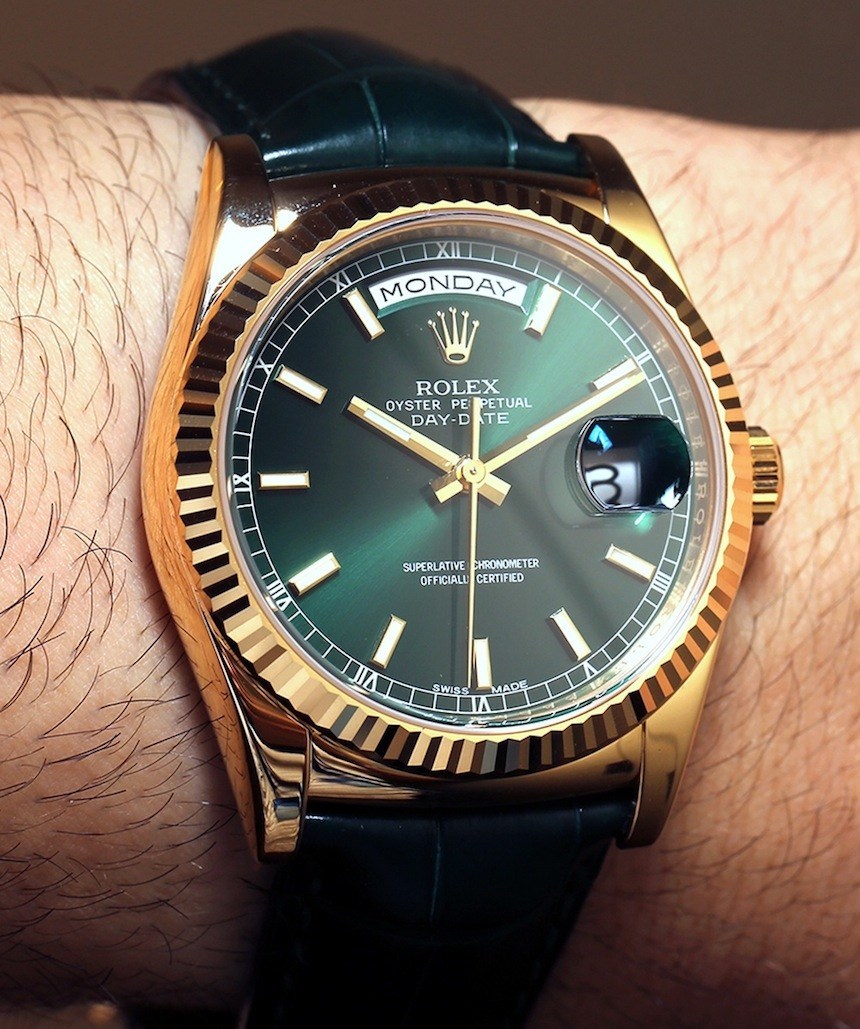
In 2013, Rolex introduced the 36mm wide Day-Date with colorful dials that rendered them wearable for both men and women. By contrast, the more modern Day-Date II comes with a heftier, 41mm wide case.
More Space Inside
An interesting side effect of larger watches being popular today is the possibilities it has created from a technical perspective. A salient and very recent example is the popularity of smartwatches. The technology required to offer a watch with a screen, connectivity, and computing power requires a certain case size for all the hardware. Smartwatch makers benefited from the fact that the popularity of larger-sized watches ensured that the public would not immediately reject their products, as they are often much larger than traditional watches.
Other examples of larger watches allowing for new technology in timepieces are GPS controlled watches, extremely deep diving watches, and other novel electronic watches requiring more space and battery power than a simple LCD screen and quartz movement.
From a mechanical watch perspective, an interesting outcome of large watch sizes has been the use of movements in wrist watches that were traditionally used for pocket watches. Perhaps the most famous example is the ETA Unitas series of manually wound movements. Panerai used these movements for a long time, and today many brands still use Unitas movements in wrist watches. Traditionally designed for a pocket watch-sized case, 44mm wide and over timepieces can easily accommodate the size of such movements.
Countless new watch movements have been created which rely on the extra space available in today’s larger case sized. Watchmakers armed with sophisticated computer software are able to design complications and mechanisms never before possible thanks not only to modern technology, but also because larger watch cases are not only accepted by the public, but often preferred. Therefore, the increasing demand for complicated and novel wrist watch technology be it mechanical or electronic has aided the continued popularity of large watch case sizes.
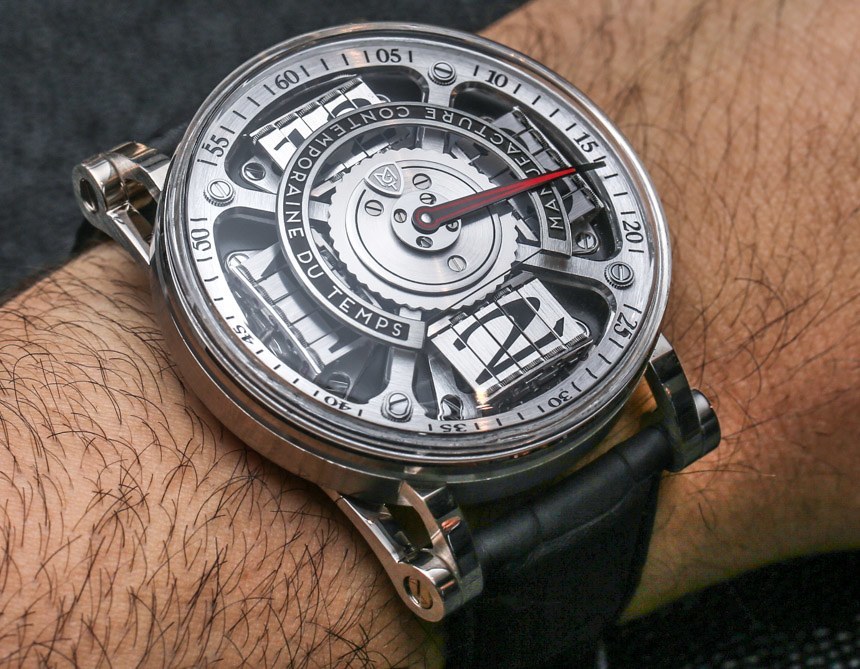
The MCT Sequential Two S200 beautifully demonstrates how the extra spaces can be translated into more highly complicated movements as it uses every bit of space of its 44.6 mm wide case to house a unique louver system.
What Is The Perfect Watch Case Size?
Using some of the style rules set forth in the beginning of this article, you can easily determine whether or not a watch case is too large for your particular wrist. Beyond that it is really going to be a matter of personal taste. Don’t let other people tell you whether a watch is too larger or too small. You’ll just have to wear it and look at it on your wrist in the mirror to make a personal decision. You also need to remember that the larger you are, the more likely a large watch will look suitable on you.
For hard numbers, allow me to simply close with the results of a survey we did here on aBlogtoWatch a few years ago that polled our audience on the watch sizes they preferred most. Over 90% of the respondents indicated that a watch case size of 40-44mm wide is what they preferred to wear on a daily basis. That size range is a good place to start, but we recommend that a well-rounded timepiece collection offers some watch size variety.

